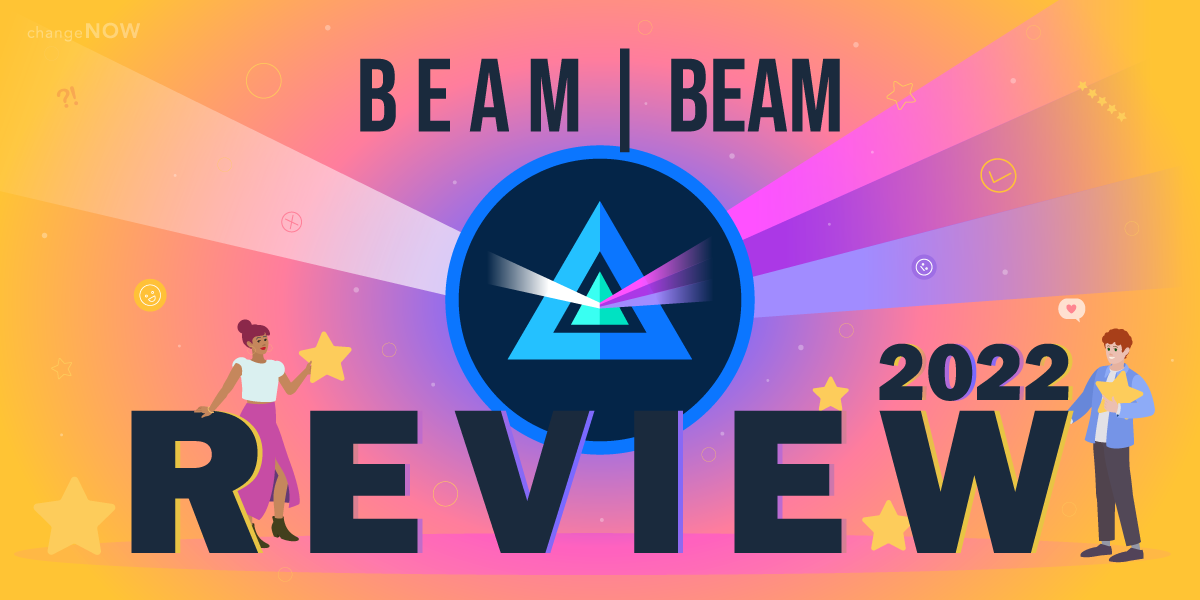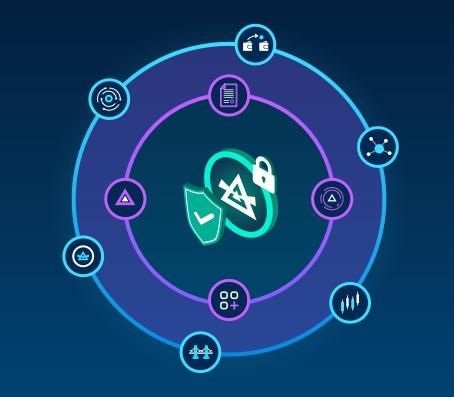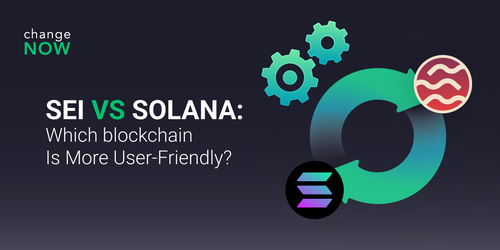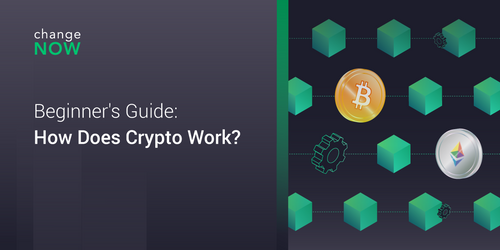Beam Coin Review 2025
It’s essential in all spheres of life, particularly in crypto.
Privacy coins like Beam allow users to maintain their anonymity while transacting with digital assets. But confidential transactions aren’t enough. Such a project needs to remain usable and scalable to receive enough support and adoption from the community.
Is BEAM coin a good investment, and has their development team managed to find the perfect balance between privacy and utility?

What Is Beam Coin?
Beam is an open-source privacy-focused cryptocurrency based on the Mimblewimble protocol. It’s not a fork or a clone of an existing digital asset; its codebase is unique and built solely in-house. Beam is far from being the first project that guarantees anonymity. Still, it aims to correct some of the mistakes of its predecessors, such as Monero or ZCash.
Beam was launched in 2018, and its mainnet went live in January 2019. In contrast to many other altcoins, there was no ICO, no crowd sales, and no pre-mined coins. Similarly to Bitcoin, this digital currency is deflationary and undergoes a halving once every 4 years. Beam has a maximum supply of over 262 million units, and around 47% of all coins are already in circulation.
The coin’s blockchain doesn’t display public transaction data, allowing users to remain completely private by default. Confidentiality is a desirable feature for individuals and businesses alike. After all, you wouldn’t want everyone to know your income, how you spend your money, and where.
Beam manages all that, and yet remains decentralized, scalable, and optionally auditable. By removing transaction data from the chain, the project doesn’t suffer from blockchain bloat like some other cryptocurrencies.
The Beam Team
The developers and creators of Beam are seasoned professionals in technology and entrepreneurship.
The CEO of the project is a software developer, executive, and crypto advisor Alexander Zaidelson. Beam’s CTO is Alex Romanov, an experienced Research and Development manager. Amir Aaronson is an entrepreneur and the team’s Chief Operating Officer. Lastly, it’s vital to mention Beni Issembert. He is a lecturer, writer, and entrepreneur who worked as Beam’s CMO and is a member of the Board of Advisors.
A non-profit company called Beam Foundation is responsible for promoting, maintaining, and developing this coin’s ecosystem. Their goal is to achieve maximum decentralization and provide the community with complete control over governance.
The Beam Foundation has a Board of Directors with 4 team members: Guy Corem, Bo Dong, Wilke Trei, and Ferdous Bhai.
Beam Roadmap
The Beam development team has been hard at work since 2019, and a lot has already been achieved.
The most notable events of 2019 were the release of Android and iOS wallets and a cold wallet. Atomic Swaps between BEAM, BTC, LTC, and QTUM were introduced in the same year. 2020 will be remembered for creating a mobile node and introducing Confidential Assets on the mainnet.
In 2022, users gained access to an in-wallet dApp store, and the Beam Virtual Machine was coded. But that’s not all. The InterPlanetary File System (IPFS) has been integrated with the BEAM blockchain, and an Asset Swap Marketplace has gone live. The most recent roadmap reveals that crypto bridges are now functioning with Ethereum and BSC.
Three additional items are highlighted for 2022:
- Oracles
- EVM Support
- Sidechains
The Beam Network
Beam is a Proof of Work (PoW) type of coin that works with a BeamHash III consensus algorithm. It was originally intended to be used as a store of value and not a day-to-day means of exchange and payments.
The blockchain’s transaction per second count is around 17 and is much higher than that of Bitcoin or privacy coin Monero. But thanks to Beam’s usage of the Mimblewimble protocol, the blockchain is significantly smaller. It contains much less data than many other cryptocurrency networks.
The technology behind the coin has noteworthy features and use cases.
Network transactions are totally private to the outside world. They contain no identifiable data about senders, receivers, or transferred amounts. Naturally, participants in the transaction know who they are dealing with.
However, Beam transactions can be auditable if the parties want them to. Opt-in audibility is available through the wallet, allowing transaction history to be saved and shared with auditors and regulators.
New tokens called Confidential Assets can be created on the Beam network. By looking at blockchain data, the UTXOs of confidential assets aren’t any different from Beam UTXOs. These tokens don’t have their own smart contracts, meaning there is no need to audit and verify new pieces of code.
The ecosystem features built-in Atomic Swaps in the official Beam wallet. Users can exchange their BEAM and network tokens P2P with other cryptocurrencies like Bitcoin, Litecoin, Qtum, Dash, and Dogecoin. Other decentralized swap possibilities will be introduced in the future.
The smart contracts are called Beam Shaders. They use the Beam Virtual Machine (BVM) to create and run confidential and decentralized applications on the network. The ecosystem has the means to incorporate other innovations, like DEXs, NFTs, wrapped tokens, sidechains, and bridges. Developers are planning to create their own algorithmic stablecoins and a lending platform, among other things.
Bitcoin’s Lightning Network is one of the most notable features in recent years. Beam has created its own payment channel called Laser Beam. It enables instant off-chain crypto transactions between two parties with later settlement and on-chain confirmation.

The different Types of Transactions
It’s essential to note that Beam supports 3 different transaction types:
- Online transactions require that both senders and receivers are online within 12 hours of the transaction broadcast. The mining fees for online transactions are the lowest among all transaction types.
- Offline transactions – these require somewhat higher fees than their online equivalent. When you send an offline transaction, the receiver doesn’t need to come online within 12 hours of it being broadcasted.
- Max Privacy transactions are a subcategory of offline transactions with advanced anonymity features. They can take up to 72 hours to be considered final.
How to Mine Beam Coin
Beam is a decentralized PoW type of cryptocurrency that can be mined with GPUs. The mining algorithm used is a modified version of Equihash called Beam Hash III. On average, a new block is generated and added to the chain every minute and contains around 1.000 transactions.
When the Beam blockchain was launched, the block rewards were set at 80 units per block. The current reward structure is 40 BEAM per block and will be valid in years 2-5 of its existence. In year 6, miners will earn only 25 BEAM/block. The project will then begin regular halving events every 4 years until the emission goes down to 0, which is expected 130+ years from now.
BEAM can be mined with both AMD and NVIDIA graphics cards. The following mining software can be utilized in the process:
AMD
- lolMiner
- Gminer
- OpenCL
NVIDIA
- lolMiner
- Gminer
- miniZ
- Bminer
- OpenCL
Those interested in mining can either become solo miners or join a mining pool. A GPU of at least 3GB of memory is a requirement. Over 70% of the network’s hashrate comes from mining pools, where two entities control more than 50% of the computational power. Before getting involved in mining, it’s possible to calculate the efficiency and potential reward structure using the calculator on the official website.
More information about pool mining can be found here. Installation instructions and guides to begin solo mining are explained in Solo Mining Beam.
Beam Coin Price Prediction
CryptoPredictions.com
The market experts from CryptoPredictions.com have analyzed BEAM, and here is what they say about the project.
BEAM is currently trading at around $0.16/coin, and they predict a rise in the value in the remaining months of 2022. This asset could be trading between $0.23 and $0.29. The first 6 months of 2023 are bearish, but the second part of the year looks much better. BEAM is expected to go above $0.30/unit in September 2023 and finish the year at $0.32.
A bullish sentiment is present throughout 2024, with predicted movements from $0.33 to $0.40 per BEAM. The price predictors anticipate a reversal during most of 2025 before the coin goes on a new run in 2026. The maximum price could be reached in November or December 2026 at over $0.46.
CoinCodex
The team from CoinCodex has this to say about Beam.
They don’t expect significant price movements in the next 50 days and predict a maximum value of $0.18 a coin. The outlook for the 200-day analysis is somewhat better, and BEAM could reach $0.20 in this period.
Based on similar market trends, the greatest returns on investment should be expected in 2023, 2024, and 2025. If their analysis methods are accurate, BEAM could be trading between $0.25 and $0.44 in 2023. In 2024, this cryptocurrency is predicted to be worth at least $0.48 to a maximum of $0.98. And finally, 2025 is the big year when it’s expected that BEAM goes above $2 a coin.
Where To Buy and Store BEAM
Beam Wallets
The BEAM cryptocurrency can be safely stored in several official wallets available for different devices and operating systems.
The desktop client supports Mac, Windows, and Linux. It can be used for sending and receiving BEAM, performing Atomic Swaps, accessing decentralized applications, and working with Confidential Assets.
Alternatively, those who prefer a command line style can utilize the CLI Wallet. This wallet must be used if you are performing lightning payments or running Beam Shaders (smart contracts).
Lastly, there is Beam Node, which is a full-node client. It works in either a mining or validating capacity. When in mining mode, the wallet verifies transactions and adds new blocks to the chain. In validating mode, the app is a data record keeper of the entire blockchain.
The Beam mobile wallet is available for iOS and Android phones. It almost supports the entire spectrum of ecosystem features aside from Atomic Swaps and dApps (only available in the desktop client).
The development team has also released a Beam Web Wallet. It’s still in beta but allows customers to send and receive the native currency and Confidential Assets.
Beam Crypto Exchanges
If you want to know where to buy BEAM crypto, head over to ChangeNOW. The instant exchange allows you to safely purchase the coin with fiat or in trade with other cryptocurrencies. Suppose you take advantage of the fixed rate option. In that case, you are guaranteed to receive the exact amount displayed on the screen despite possible rate fluctuations.
Those who prefer centralized exchanges can buy BEAM on platforms such as Binance, Gate.io, MEXC, CoinEx, ViteX, BitForex, BKEX, etc.



